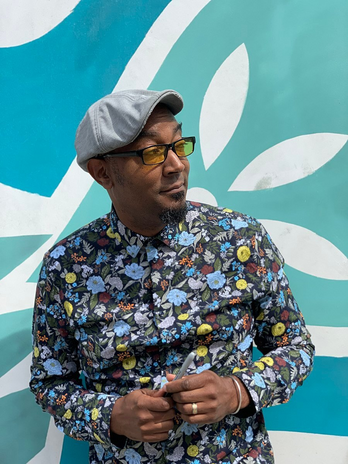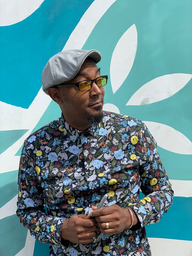Recently, Her Campus Columbia Barnard writer Claire Hunt interviewed cartoonist and creator of Hulu’s WOKE, Keith Knight, about the show and his career path.
Her Campus: When did you first begin drawing? What was your “first” comic?
Keith Knight: I’ve been drawing for as long as I can remember. I remember being praised for drawing dinosaurs in kindergarten. I had my own version of MAD magazine in fifth grade, called “KooKy” magazine. And I drew my first autobio strip in junior high, about a food fight in the cafeteria.
HC: What cartoonists have influenced your personal style? Who are some of your favorite cartoonists?
KK: Sergio Aragones. Harvey Kurtzman. Pete Bagge. Chuck Jones. Bill Watterson. Nina Paley. Jaime Crespo. Parliament/Funkadelic album art. My cousin Joel. Other favorite cartoonists: Mary Fleener. Joe Matt. Kate Beaton. Ron Wimberly. Lonnie Millsap. Steven Notley.
HC: What is your creative process when you create cartoons?
KK: I comb news sites, newspapers and magazines for my editorial stuff. I carry a sketchbook around with me and take a lot of ideas from my life. I sketch the comics out in a notebook. And when I’m ready, I’ll do the finish in pencil of bristol, then ink it. Scan it, and color it in Photoshop.
HC: Where do you draw inspiration for your cartoons? How has the ever-changing political climate affected your art — including people’s reception of it?
KK: Again — I’m always consuming media, looking for an angle that is unique. The changing political climate has actually come around to the work I’ve been doing about police brutality, for decades!
HC: How did growing up as a black man in Massachusettes in the 1980s influence your worldview? How did your experiences in Boston differ from your years in San Francisco?
KK: Boston is an interesting place. It has its own special kind of racism. But I enjoyed growing up there. There are lobster rolls, you know. San Francisco was where I could let my freak flag fly. But my weirdness started in college back in Salem, Mass.
HC: What was your first memory of social and racial inequality or discrimination? When did you realize that you were the “sausage” in America’s factory (referring to your cartoon about how America’s “sausage” gets made)?
KK: I remember going skiing when I was little and a kid saying to their parents, “I thought you said there weren’t going to be any up here!” I was also accused of stealing a canoe at a campground in New Hampshire when I was, like, 13.
HC: What would you say has transformed you into the activist you are today?
KK: Common sense.
HC: What was the process behind getting your story picked up by Hulu?
KK: I told some of my stories during the pitch. I think they really dug my sensibility. I told great stories, and when we were done with the meeting, I pulled out a 500-page collection of my work, tossed it up in the air and it landed on the table with a huge plop. Then I pointed and said, “There’s your first ten seasons!” And I walked out.
HC: What were your thoughts about the use of animation in the show?
KK: I told everyone that there’s nothing more boring than a cartoonist just sitting at his desk, drawing comics. We wanted another way to show off some art, so we thought, “What if we made inanimate objects come to life?”
HC: Why was your character initially introduced as apolitical? What was the thinking behind the subtle altering of your life’s real events for the show?
KK: We needed the character to go one a long journey, so we packed 35 years of my life into an eight-episode arc.
HC: As a creator of WOKE, you advocated for diversity within the staff. What are your opinions on the lack of diversity in mainstream hollywood/media?
KK: It’s not going to change unless you actively seek it out. You have to ask for it. And people of color have to get into positions of power in Hollywood. I hope to be one of them someday.
HC: Of the entire process of creating a television program, what was the most surprising/interesting?
KK: There are some people in Hollywood getting paid shitloads of money, and they don’t do a whole lot.


